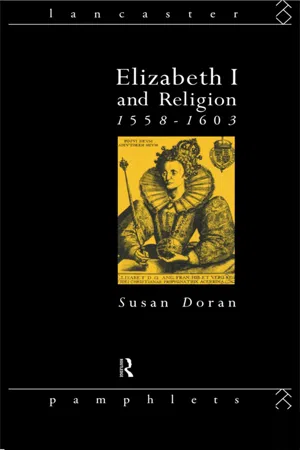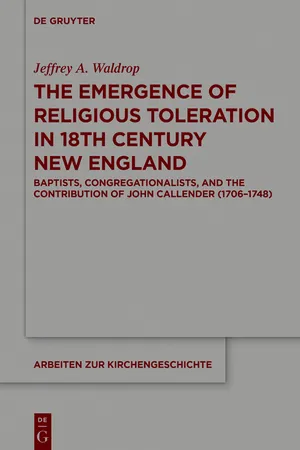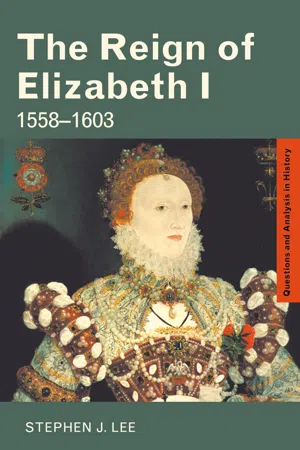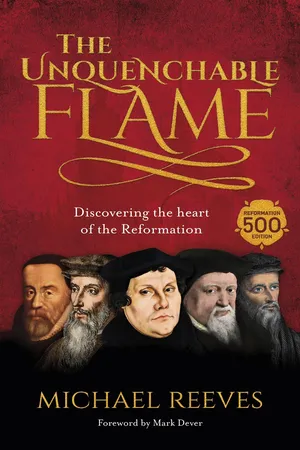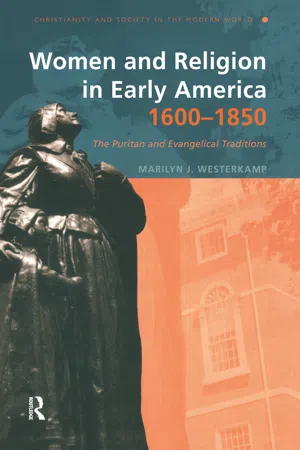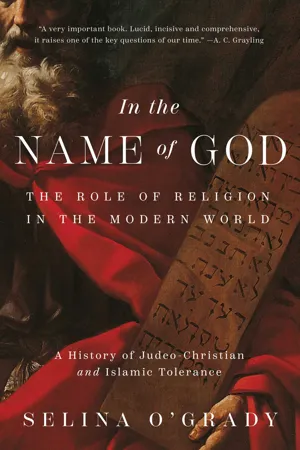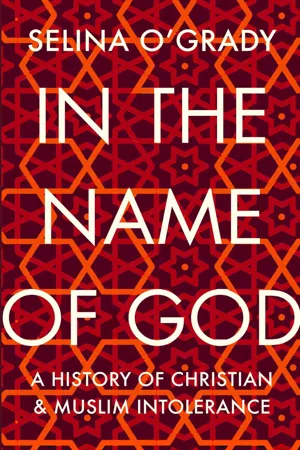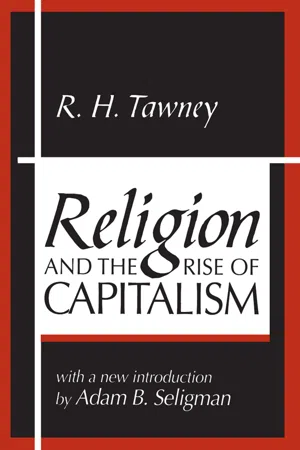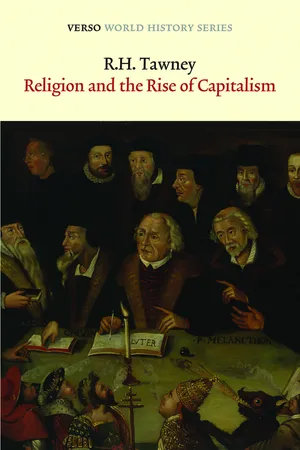History
Puritans
The Puritans were a group of English Protestants in the 16th and 17th centuries who sought to purify the Church of England from within. They emphasized the importance of personal piety, simplicity, and moral purity. The Puritans played a significant role in the colonization of America, particularly in New England, where their religious beliefs and practices influenced the development of early American society.
Written by Perlego with AI-assistance
Related key terms
Related key terms
1 of 4
Related key terms
1 of 3
12 Key excerpts on "Puritans"
- eBook - ePub
- Susan Doran(Author)
- 2002(Publication Date)
- Routledge(Publisher)
5 The Puritans
Definitions
Puritanism has traditionally been defined in relation to Anglicanism, since historians viewed it as the radical Protestant alternative to the Anglican Church and the ideology of a small but assertive opposition group who wanted to align the Church of England with the Reformed Church on the Continent. Puritans were, therefore, usually described as Calvinists or as reformers who wanted to purge the Anglican Church of its Catholic features.The redefinition of mainstream Protestantism and rejection of the name ‘Anglicanism’ clearly posed a problem for historians used to treating Puritans in this way. It now became clear that there was no profound theological cleavage within the Elizabethan Church but that on the contrary there was in general a ‘Calvinist consensus’ (Lake 1987). With this revision, a new definition of Puritanism was clearly required but it was not easy to find. Puritans were not an easily identified group within the Church who held distinct opinions about doctrine, liturgy and discipline; nor were they merely a reforming group who saw the 1559 Settlement as temporary and endeavoured to obtain further instalments of reform, for this could equally well be said of the early Elizabethan bishops. Frustrated by the difficulties of finding a clear definition which could be used to distinguishPuritans from mainstream Protestants who were also Reformed in their outlook and reformers in their intentions, some historians have given up the struggle for precision and have discarded the word ‘Puritan’ along with ‘Anglican’. Others, such as Paul Christianson, have responded to the problem by defining ‘Puritan’ more narrowly, and limiting it to Presbyterians and hardened nonconformists who would not obey the orders of the bishops yet did not separate themselves from the Church of England and accepted the royal supremacy, albeit with some reservations (Christianson 1980). - Jeffrey A. Waldrop(Author)
- 2018(Publication Date)
- De Gruyter(Publisher)
Transatlantic Puritanism must be studied in light of the rise of Puritanism in England up to roughly the 1630’s, at which point the “great migration” commenced. As we have seen earlier, some scholars tend to label the Puritans in terms of their persecutory actions in New England. Yet, a study of the theological roots of Puritanism reveals several ideas from the Continent that undergird the understanding of Puritanism as a multi-faceted movement.Sixteenth-century Puritanism can be defined as a collection of smaller groups coupled with the main body of Anglicans who called for purity within the Church. Some historians have solely identified “Puritanism” with reforming Anglicans, but as Peter Lake has shown us, seventeenth-century Puritanism encompasses more than just that one idea. It is, rather, a collection of ideas, theologies, and people, woven into the general fabric of English society.The new definition of Puritanism is multi-colored, and thus many characteristics of English Puritanism abound. Persecution gave rise to nonconformity and dissent, and the Puritans demonstrated their dissent in a variety of ways. What Lake’s definition brings to light most importantly, is an emphasis on the fact that Puritanism was itself comprised of people who consistently busied themselves in the act of devotion and piety within the various arenas of England, whether it was the pulpit, the trading floor, or Parliament. It was Puritan piety that undergirded their actions, both in Britain in the New World.As this piety gained ground, a firm divide was established between those who chose to stay and fight within the Church, or those who chose to separate. Thus, the flavor of English Puritanism that arrived in the New World was either Separatist, or Non-Separatist. A study of Puritan piety also reveals a strand of radical pious Puritans who would incur the wrath of both Anglicans and Puritans.- eBook - ePub
The Reign of Elizabeth I
1558–1603
- Stephen J. Lee(Author)
- 2020(Publication Date)
- Routledge(Publisher)
PURITANISM AND THE PURITAN ‘THREAT’BACKGROUNDThe term ‘Puritan’ was initially one of abuse and was not widely used during the sixteenth century. It was first applied to those who resisted the official doctrine and rubric in the 1559 Prayer Book. Those who came under the generic term preferred at the time to call themselves ‘the Godly’ or ‘True Gospellers’. Analysis 1 considers the question of definition and how the views of historians have changed over the past century. Whether or not Puritanism was a ‘threat’ to the religious and political establishment is dealt with in Analysis 2; while the historiography of this issue is the subject of Analysis 3.ANALYSIS 1: WHO WERE THE ‘Puritans’?This has certainly been a slippery term to define. P. Williams maintained that there was no rigid body of doctrine that could be called ‘Puritanism’ – but that there were ‘Puritans’.1 The main characteristics included the influence of Calvin’s ideas, especially of predestination, a desire to practise the precepts of Geneva’s ‘godly society’ and an ordering of their moral behaviour strictly in accordance with the Bible. They were strongly anti-Catholic and emphasised the need for further Protestant reform of the Church of England; in particular, they wanted a simplification of clerical dress and they opposed ‘popish’ and ‘superstitious’ rituals such as making the sign of the cross and kneeling at communion. Their services also became renowned for the central role of preaching.The main areas inhabited by Puritans were the south-west, especially Devon and Cornwall; the south-east, including Essex and Kent; East Anglia and Lincolnshire; parts of the Midlands; and southern Lancashire, especially Manchester – where they were seen as a counter-balance to the preponderance of Catholics elsewhere in the north-west. Some historians have argued that Puritans came primarily from the middle classes, especially from the more enterprising groups of skilled workers, shopkeepers and merchants. This appears to be borne out by the distribution of Puritanism, which was most widespread in towns, ports and other areas of more concentrated economic activity. But the explanations attributed to this need to be dealt with cautiously. On the one hand, it is possible to make a direct connection between religious affiliation and occupation on geographical lines: radical influences, for example, entered England from the continent along trade routes. It is also reasonable to argue that skilled occupational groups would be more likely to have sufficient education to be attracted by the need for self-thought and responsibility which Puritanism tended to promote. On the other hand, some arguments have gone too far. R.H. Tawney observed in 1926 that there was a close affinity between Puritanism and the rise of capitalism – ‘Puritanism became a potent force in preparing the way for the commercial civilization’ – and that opposition to restraints imposed by church and state on ‘individual self-interest’ appeared ‘quite early in the reign of Elizabeth’, eventually going on to influence the powerful movement which ‘finally triumphed at the Revolution’.2 - eBook - ePub
- James Roberts, Martyn Whittock(Authors)
- 2020(Publication Date)
- Biteback Publishing(Publisher)
There the children of the seventeenth-century Puritans certainly faced the loss of their cultural dominance, but they were not shut out of political power. In the North American colonies they continued to be political ‘insiders’, rather than Nonconformist ‘outsiders’. This was to have significant ramifications for the future history of the United States. 62 NOTES 1 Claude S. Fischer, Made in America: A Social History of American Culture and Character (Chicago, IL: University of Chicago Press, 2010), p. 106. 2 E. Brooks Holifield, ‘Peace, Conflict, and Ritual in Puritan Congregations’, The Journal of Interdisciplinary History, Vol. 23, No. 3, Religion and History (Winter 1993), pp. 551–70. 3 Sydney Ahlstrom, A Religious History of the American People, 2nd edn (New Haven, CT, and London: Yale University Press, 1972), pp. 280–330. 4 Henry Warner Bowden, ‘What is Puritanism?’, Scholastic, https://www.scholastic.com/teachers/articles/teaching-content/what-puritanism/ (accessed April 2019). 5 Emory Elliott, ‘The Legacy of Puritanism’, Divining America, TeacherServe, National Humanities Center, http://nationalhumanitiescenter.org/tserve/eighteen/ekeyinfo/legacy.htm (accessed November 2016). 6 The so-called Boston Tea Party was a protest against the Tea Act of 1773, which allowed the British East India company to sell tea in the American colonies without paying taxes, apart from those recently imposed on the colonies, which were objected to by the American patriots. 7 Emory Elliott, ‘The Legacy of Puritanism’. 8 Modern-day targets, well evidenced in modern millenarian literature and online sources emanating from the USA, and to a lesser extent the UK, include: the papacy (a historical target); the European Union (a modern target); a worldwide conspiracy of complex form involving liberalism, political elites of varied political persuasions, international finance and a supposed anti-Christian worldwide religion (a modern target) - eBook - ePub
Women in Early American Religion 1600-1850
The Puritan and Evangelical Traditions
- Marilyn J. Westerkamp(Author)
- 2005(Publication Date)
- Routledge(Publisher)
Part I
The Puritan heritage
Passage contains an image
2 Wives and mothers in the colonial New England landscape
On Easter Monday, 1630, John Winthrop, governor of the Company of Massachusetts Bay, set sail aboard the Arbella, the flagship of a fleet carrying colonists to their newly chartered colony in New England. The men, women, and children who embarked upon this venture hoped to build villages and towns, churches and governments that reflected their own vision of godliness and order. Winthrop's well-known exhortation, that they were to be a “City on a Hill,” a shining example to England and the world, was reflected in plans for a biblical commonwealth to be grounded in laws and principles gleaned from the Scriptures. The colonizers were mostly Puritans, and their identity as Puritans would come to define not only the religious organization but also the cultural climate, social environment, and political structures of New England through the next century. Historians have told the story so often that it has become a simple one: united, dedicated religionists governed by wise, astute leaders always in control of their harmonious society together met challenges posed by the natural environment, the native Americans, as well as troublesome, sometimes antagonistic European outsiders. This oft-told story involved men of intense piety, committed laymen as well as clerics, who had defied the established church and its bishops and left their homes to construct a new Israel in the wilderness. It is a story of governors, ministers, merchants, artisans, and farmers—a story of men.Yet the story is not so simple, for the people were frequently at odds with each other and with their leaders. The leaders themselves were sometimes pushed beyond their political abilities by spiraling growth and disruptive religious diversity. Additionally, the New England experiment involved as many women as men, as silent participants certainly, but also as actors effecting change in their own right. The very nature of Puritan culture, its focus upon religious and political reform and the intensity of Puritan spirituality, opened the doors of religious power and authority to all persons, poor and wealthy, lowly and highly ranked, illiterate and educated, female and male. - eBook - ePub
The Unquenchable Flame
Discovering The Heart Of The Reformation
- Michael Reeves(Author)
- 2012(Publication Date)
- IVP(Publisher)
6 Reforming the Reformation: the Puritans
Who were the Puritans?
‘Puritan’: the word has always been more a weapon than a description. For the vast majority it is verbal mud that, once hurled, makes the victim look a laughable, po-faced, lemon-sucking prig. For the small minority it is brandished as a description of a united golden team with the most impeccable theological and spiritual credentials.The word was coined as a term of abuse shortly after Elizabeth became queen: for the average Englishman, there was the Catholic ‘papist’ on one side, and the ‘precisionist’ or ‘puritan’, who went too far the other way. It suggested a nit-picking, holier-than-thou sort, who considered themselves purer than the rest. It was certainly not a fair description: those it was applied to clearly never thought of themselves as pure (far, far from it, as their constant testimony to their own sinfulness demonstrates). But neither was it a very precise description: recognized Puritans differed from one another, often sharply. They could disagree over what the cross was about; they could disagree over how, exactly, to be saved; the poet John Milton, an undoubted Puritan, did not even believe in the Trinity, the God of all Christian creeds.Who, then, were the Puritans? Perhaps John Milton put it best, when he spoke of ‘the reforming of the Reformation’, for that was the united goal of all Puritans. It was not that they thought they were pure, it was that they wanted to purify what in the church and in themselves had not yet been purified. They wanted reform, and while they had some different ideas as to what that should look like, they wanted to apply the Reformation to everything it had not yet touched. They thought the Reformation was a good thing, but that it was not yet complete. - eBook - ePub
Women and Religion in Early America,1600-1850
The Puritan and Evangelical Traditions
- Marilyn J. Westerkamp(Author)
- 2020(Publication Date)
- Routledge(Publisher)
Part IThe Puritan heritage
Passage contains an image
2 Wives and mothers in the colonial New England landscape
On Easter Monday, 1630, John Winthrop, governor of the Company of Massachusetts Bay, set sail aboard the Arbella, the flagship of a fleet carrying colonists to their newly chartered colony in New England. The men, women, and children who embarked upon this venture hoped to build villages and towns, churches and governments that reflected their own vision of godliness and order. Winthrop’s well-known exhortation, that they were to be a “City on a Hill,” a shining example to England and the world, was reflected in plans for a biblical commonwealth to be grounded in laws and principles gleaned from the Scriptures. The colonizers were mostly Puritans, and their identity as Puritans would come to define not only the religious organization but also the cultural climate, social environment, and political structures of New England through the next century. Historians have told the story so often that it has become a simple one: united, dedicated religionists governed by wise, astute leaders always in control of their harmonious society together met challenges posed by the natural environment, the native Americans, as well as troublesome, sometimes antagonistic European outsiders. This oft-told story involved men of intense piety, committed laymen as well as clerics, who had defied the established church and its bishops and left their homes to construct a new Israel in the wilderness. It is a story of governors, ministers, merchants, artisans, and farmers – a story of men.Yet the story is not so simple, for the people were frequently at odds with each other and with their leaders. The leaders themselves were sometimes pushed beyond their political abilities by spiraling growth and disruptive religious diversity. Additionally, the New England experiment involved as many women as men, as silent participants certainly, but also as actors effecting change in their own right. The very nature of Puritan culture, its focus upon religious and political reform and the intensity of Puritan spirituality, opened the doors of religious power and authority to all persons, poor and wealthy, lowly and highly ranked, illiterate and educated, female and male. - eBook - ePub
American Protestant Theology
A Historical Sketch
- Luigi Giussani, Damian Bacich(Authors)
- 2013(Publication Date)
- McGill-Queen's University Press(Publisher)
11 RELIGIOUS INSPIRATIONPuritan Origins
The important role the religious factor played in the formation and character of the colonies that would later make up the United States of America is well known. The first societies to colonize the new land took care to make it known that the spread of religion was one of their goals, indeed, their “maine and cheefe purpose,”1 asserted a leaflet published in 1615 by the council of the first English colonial enterprise in America, the Virginia Company.The strongest reason for the influence exerted by the religious factor in the Protestant colonies of seventeenth-century America is found in the fact that many of them declared themselves to be havens for those persecuted for their faith. Naturally, these emigrants carried with them the beliefs of the European religious groups to which they belonged. Thus, already in the seventeenth century, we find Anglicans, Calvinists, Lutherans, and “sectarians” of various orientations, especially Baptists. Anglicanism had been bound, as the “Established Church,” to that Crown whose religious despotism many had fled, or whose political dominion the new colonies would later have to struggle against in the War of Independence. It was, therefore, a minority denomination, even though it was officially established in the two “royal” colonies of Virginia and Maryland. Lutheranism was also a minority, and its influence was nullified by the isolationism of the religious and civil life of the German and Swedish immigrants, an isolationism also fomented by their strict attachment to their native languages. - eBook - ePub
In the Name of God
The Role of Religion in the Modern World: A History of Judeo-Christian and Islamic Tolerance
- Selina O'Grady(Author)
- 2020(Publication Date)
- Pegasus Books(Publisher)
I As a critic of the current state of the Church of England, the Puritan was implicitly if not explicitly criticizing the authority of the monarch himself who was the head of the church. ‘No bishop, no king,’ as James I observed. And how prescient he was. His son Charles I would be beheaded by Puritan Parliamentarians who had combined opposition to Charles’s authoritarian rule with opposition to the authoritarian rule of the Church of England and its hierarchy of bishops.Under James, Puritans who refused to worship in accordance with the prayers and rituals set down in the Book of Common Prayer and clergymen who refused to wear vestments, which in Puritan eyes smacked of Catholicism, risked heavy fines, loss of their jobs, imprisonment, or even execution (only two heretics were actually executed during James’s reign).Intra-faith antagonisms, which had been bedevilling continental Europe as much as they had been England, only intensified. Neighbour denounced neighbour, priest or pastor to the authorities for being too Catholic, or too radically Protestant, and not conforming to the act of uniformity which laid down the minimum requirements of belief and practice that every subject was required to follow. Of course individual acts of cross-confessional kindness co-existed alongside acts of betrayal or violence: the entire body of constables and churchwardens of one Yorkshire parish was imprisoned for refusing to certify what kind of education the children of local Catholic recusants were receiving; Lincolnshire villagers payed the debts of a Quaker who had been imprisoned for non-payment of tithes.Between 1629 and 1640, 80,000 people left their homes, livelihoods, neighbours and country to start a new life in the Netherlands, the West Indies (where the English had just taken possession of Barbados and Jamaica and were importing slaves to work the sugar cane plantations) or North America. Roger Williams and his wife were amongst them. - eBook - ePub
In the Name of God
A History of Christian and Muslim Intolerance
- Selina O'Grady(Author)
- 2019(Publication Date)
- Atlantic Books(Publisher)
* As a critic of the current state the puritan who fought the Puritans 267 of the Church of England, the Puritan was implicitly if not explicitly criticizing the authority of the monarch himself who was the head of the church. ‘No bishop, no king,’ as James I observed. And how prescient he was. His son Charles I would be beheaded by Puritan Parliamentarians who had combined opposition to Charles’s authoritarian rule with opposition to the authoritarian rule of the Church of England and its hierarchy of bishops.Under James, Puritans who refused to worship in accordance with the prayers and rituals set down in the Book of Common Prayer and clergymen who refused to wear vestments, which in Puritan eyes smacked of Catholicism, risked heavy fines, loss of their jobs, imprisonment, or even execution (only two heretics were actually executed during James’s reign).Intra-faith antagonisms, which had been bedevilling continental Europe as much as they had been England, only intensified. Neighbour denounced neighbour, priest or pastor to the authorities for being too Catholic, or too radically Protestant, and not conforming to the act of uniformity which laid down the minimum requirements of belief and practice that every subject was required to follow. Of course individual acts of cross-confessional kindness co-existed alongside acts of betrayal or violence: the entire body of constables and churchwardens of one Yorkshire parish was imprisoned for refusing to certify what kind of education the children of local Catholic recusants were receiving; Lincolnshire villagers payed the debts of a Quaker who had been imprisoned for non-payment of tithes. - eBook - ePub
- R.H. Tawney(Author)
- 2017(Publication Date)
- Routledge(Publisher)
62 Behind the elaborate façade of Tudor State control, which has attracted the attention of historians, an individualist movement had been steadily developing, which found expression in opposition to the traditional policy of stereotyping economic relations by checking enclosure, controlling food supplies and prices, interfering with the money-market, and regulating the conditions of the wage contract and of apprenticeship. In the first forty years of the seventeenth century, on grounds both of expediency and of principle, the commercial and propertied classes were becoming increasingly restive under the whole system, at once ambitious and inefficient, of economic paternalism. It was in the same sections of the community that both religious and economic dissatisfaction were most acute. Puritanism, with its idealization of the spiritual energies which found expression in the activities of business and industry, drew the isolated rivulets of discontent together, and swept them forward with the dignity and momentum of a religious and a social philosophy.For it was not merely as the exponent of certain tenets as to theology and church government, but as the champion of interests and opinions embracing every side of the life of society, that the Puritan movement came into collision with the Crown. In reality, as is the case with most heroic ideologies, the social and religious aspects of Puritanism were not disentangled; they presented themselves, both to supporters and opponents, as different facets of a single scheme. “All that crossed the views of the needy courtiers, the proud encroaching priests, the thievish projectors, the lewd nobility and gentry…whoever could endure a sermon, modest habit or conversation, or anything good—all these were Puritans.” 63 The clash was not one of theories—a systematic and theoretical individualism did not develop till after the Restoration—but of contradictory economic interests and incompatible conceptions of social expediency.The economic policy haltingly pursued by the Government of Charles I bore some resemblance to the system of which a more uncompromising version was developed between 1661 and 1685 by Colbert in France. It was one which favored an artificial and State-promoted capitalism—a capitalism resting on the grant of privileges and concessions to company promoters who would pay for them, and accompanied by an elaborate system of State control, which again, if partly inspired by a genuine solicitude for the public interest, was too often smeared with an odious trail of finance. It found its characteristic expression in the grant of patents, in the revival of the royal monopoly of exchange business, against which the City had fought under Elizabeth, in attempts to enforce by administrative action compliance with the elaborate and impracticable code controlling the textile trades and to put down speculation in foodstuffs, and in raids on enclosing landlords, on employers who paid in truck or evaded the rates fixed by assessment, and on justices who were negligent in the administration of the Poor Laws. Such measures were combined with occasional plunges into even more grandiose schemes for the establishment of county granaries, for taking certain industries into the hands of the Crown, and even for the virtual nationalization of the cloth manufacture.64 - eBook - ePub
- R. H. Tawney(Author)
- 2015(Publication Date)
- Verso(Publisher)
The England of Shakespeare and Bacon was still largely medieval in its economic organization and social outlook, more interested in maintaining customary standards of consumption than in accumulating capital for future production, with an aristocracy contemptuous of the economic virtues, a peasantry farming for subsistence amid the organized confusion of the open-field village, and a small, if growing, body of jealously conservative craftsmen. In such a society Puritanism worked like the yeast which sets the whole mass fermenting. It went through its slack and loosely knit texture like a troop of Cromwell’s Ironsides through the disorderly cavalry of Rupert. Where, as in Ireland, the elements were so alien that assimilation was out of the question, the result was a wound that festered for three centuries. In England the effect was that at once of an irritant and of a tonic. Puritanism had its own standards of social conduct, derived partly from the obvious interests of the commercial classes, partly from its conception of the nature of God and the destiny of man. These standards were in sharp antithesis, both to the considerable surviving elements of feudalism in English society, and to the policy of the authoritarian State, with its ideal of an ordered and graded society, whose different members were to be maintained in their traditional status by the pressure and protection of a paternal monarchy. Sapping the former by its influence, and overthrowing the latter by direct attack, Puritanism became a potent force in preparing the way for the commercial civilization which finally triumphed at the Revolution.The complaint that religious radicalism, which aimed at upsetting the government of the Church, went hand in hand with an economic radicalism, which resented the restraints on individual self-interest imposed in the name of religion or of social policy, was being made by the stricter school of religious opinion quite early in the reign of Elizabeth.57 Seventeenth-century writers repeated the charge that the Puritan conscience lost its delicacy where matters of business were concerned, and some of them were sufficiently struck by the phenomenon to attempt an historical explanation of it. The example on which they usually seized – the symbol of a supposed general disposition to laxity – was the indulgence shown by Puritan divines in the particular matter of moderate interest. It was the effect, so the picturesque story ran,58 of the Marian persecution. The refugees who fled to the Continent could not start business in a foreign country. If, driven by necessity, they invested their capital and lived on the proceeds, who could quarrel with so venial a lapse in so good a cause? Subsequent writers embellished the picture. The redistribution of property at the time of the Dissolution, and the expansion of trade in the middle of the century, had led, one of them argued, to a great increase in the volume of credit transactions. The opprobrium which attached to loans at interest – ‘a sly and forbid practice’ – not only among Romanists and Anglicans, but among honest Puritans, played into the hands of the less scrupulous members of ‘the faction’. Disappointed in politics, they took to money-lending, and, without venturing to justify usury in theory, defended it in practice. ‘Without the scandal of a recantation, they contrived an expedient, by maintaining that, though usury for the name were stark naught, yet for widows, orphans, and other impotents (therein principally comprising the saints under persecution) it was very tolerable, because profitable, and in a manner necessary.’ Naturally, Calvin’s doctrine as to the legitimacy of moderate interest was hailed by these hypocrites with a shout of glee. ‘It took with the brethren like polygamy with the Turks, recommended by the example of divers zealous ministers, who themselves desired to pass for orphans of the first rank.’59 Nor was it only as the apologist of moderate interest that Puritanism was alleged to reveal the cloven hoof. Puritans themselves complained of a mercilessness in driving hard bargains, and of a harshness to the poor, which contrasted unfavourably with the practice of followers of the unreformed religion. ‘The Papists’, wrote a Puritan in 1653, ‘may rise up against many of this generation. It is a sad thing that they should be more forward upon a bad principle than a Christian upon a good one.’60
Index pages curate the most relevant extracts from our library of academic textbooks. They’ve been created using an in-house natural language model (NLM), each adding context and meaning to key research topics.
Explore more topic indexes
Explore more topic indexes
1 of 6
Explore more topic indexes
1 of 4
